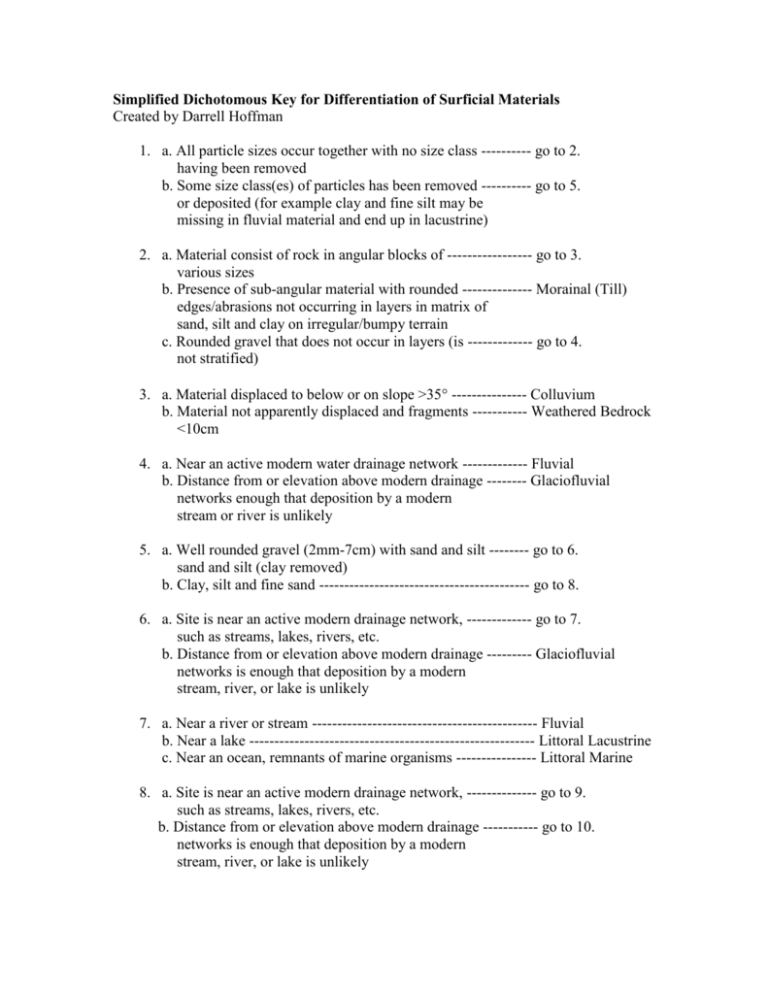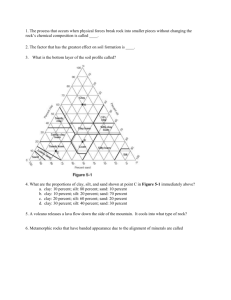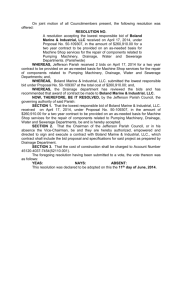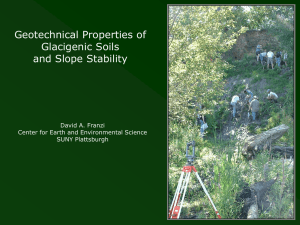Simplified version
advertisement

Simplified Dichotomous Key for Differentiation of Surficial Materials Created by Darrell Hoffman 1. a. All particle sizes occur together with no size class ---------- go to 2. having been removed b. Some size class(es) of particles has been removed ---------- go to 5. or deposited (for example clay and fine silt may be missing in fluvial material and end up in lacustrine) 2. a. Material consist of rock in angular blocks of ----------------- go to 3. various sizes b. Presence of sub-angular material with rounded -------------- Morainal (Till) edges/abrasions not occurring in layers in matrix of sand, silt and clay on irregular/bumpy terrain c. Rounded gravel that does not occur in layers (is ------------- go to 4. not stratified) 3. a. Material displaced to below or on slope >35 --------------- Colluvium b. Material not apparently displaced and fragments ----------- Weathered Bedrock <10cm 4. a. Near an active modern water drainage network ------------- Fluvial b. Distance from or elevation above modern drainage -------- Glaciofluvial networks enough that deposition by a modern stream or river is unlikely 5. a. Well rounded gravel (2mm-7cm) with sand and silt -------- go to 6. sand and silt (clay removed) b. Clay, silt and fine sand ------------------------------------------ go to 8. 6. a. Site is near an active modern drainage network, ------------- go to 7. such as streams, lakes, rivers, etc. b. Distance from or elevation above modern drainage --------- Glaciofluvial networks is enough that deposition by a modern stream, river, or lake is unlikely 7. a. Near a river or stream --------------------------------------------- Fluvial b. Near a lake --------------------------------------------------------- Littoral Lacustrine c. Near an ocean, remnants of marine organisms ---------------- Littoral Marine 8. a. Site is near an active modern drainage network, -------------- go to 9. such as streams, lakes, rivers, etc. b. Distance from or elevation above modern drainage ----------- go to 10. networks is enough that deposition by a modern stream, river, or lake is unlikely 9. a. Near a lake, occurs in layers (stratified) ---------------------- Lacustrine b. Near ocean, not layered, marine shells or other ------------- Marine remains of marine organisms 10. a. Bumpy irregular terrain, no marine organism --------------- Glaciolacustrine remains b. Presence of marine shells or other marine ------------------- Glaciomarine organism remains REFERENCE Ministry of Environment (1997) Terrain Classification System for British Columbia Version 2. Fisheries Branch, Ministry of Environment and Surveys and Resource Mapping Branch, Ministry of Crown Lands Province of British Columbia, 10-25. ACKNOWLEDGEMENTS Thanks to Dr. Chuck Bulmer and Dr. Margaret Schmidt for their help in creating this key.










